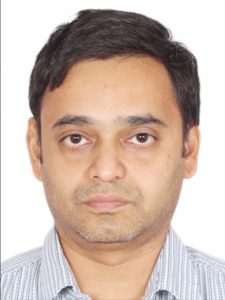滞在レポート:Prof. Kedar Damle

To start with the basics: I spent the last three months at ISSP (today is my last day here), having taken up an invitation to spend some time here as a Visiting Professor. Although the initial invitation from the University of Tokyo was for a year’s appointment at ISSP, my colleague at ISSP, Masaki Oshikawa, who had been in touch with me about this possibility, readily agreed to a curtailed three month appointment and set in motion the well-oiled ISSP machinery that works behind the scenes to make such visits possible in practical terms.
After a hectic couple of weeks making arrangements for this unusually long (from my point of view!) absence from my home base, the Tata Institute of Fundamental Research in Mumbai (India), where I serve on the Natural Sciences Faculty, I arrived here looking forward to the possibility of spending time discussing physics with Masaki (whose work I have long admired from afar) and his group, but frankly a bit apprehensive about the thought of living for three months in a culture whose three scripts I cannot read, and language I cannot understand—the thought of being effectively illiterate for three months weighed heavily somewhere in the subconscious, since I was aware that Japan has a long and proud tradition of carrying on in all spheres of activity using their own language as the primary means of communication and record-keeping.
Japan did not disappoint in this regard, nor did ISSP. Coming from a country that has ended up adopting English as the primary means of communication and dissemination of information at least in university settings, it was quite an education to see a whole new world, where every conceivable book has a Japanese edition (often much much smaller in size than the corresponding English edition—and this has nothing to do with typeset as far as I can tell—rather, it is perhaps a tribute to the high information density of Kanji), seminars are in Japanese unless the speaker specifically warns the audience by submitting an abstract in English, keyboards, in spite of having only the usual limited number of keys, are used at breathtaking pace to produce a variety of Kanji characters (and perhaps Hiragana and Katakana characters as well?) whose number vastly exceeds the available keys—how this is done remains a mystery to me, although I have shamelessly peered over Masaki’s shoulder on multiple occasions in the last three months while he wrote emails predominantly in Kanji script at breakneck speed sitting at the back of some seminar—loudspeakers embedded into the false ceilings of the building helpfully provide a detailed Japanese summary of the day’s colloquium an hour or so before it is to begin, and every supermarket trip becomes a game of roulette, with one never quite knowing what’s being proclaimed in bright red letters on that attractive looking package of chips!
At this point, the uninitiated reader will perhaps find it hard to imagine how an effectively unlettered person could possibly function over the period of an extended visit at a level that would make such a visit fruitful and productive in professional terms. But for the initiated, who have already experienced the perhaps uniquely Japanese combination of enormous attention to detail (the Japanese are one people who truly have nothing to learn from “The Checklist Manifesto” of Atul Gawande), incredibly warm hospitality, and ingrained helpfulness and unfailing politeness that goes well beyond the ordinary, it will come as no surprise that I look back on three months well-spent, with old projects taking on new twists, new ones starting from discussions over coffee with Masaki and his group, and the unexpected bonus of having Naoki Kawashima and some of his group willing and interested in helping me explore something I’ve been wanting to clear up for some time now.
This is hardly the forum to dwell on details of these discussions, or our hopes for bringing to fruition some of what we discussed at ISSP—Time will tell, and the interested can always check on the arXiv in perhaps a year’s time from now! Rather, let me close this note by doffing my hat (yes, I did go and buy a hat, since this is a country where hats and caps of all manner are worn at the slightest hint of the sun!) to the people at ISSP, who, for me, have been the personification of the warm hospitality, ingrained helpfulness and unfailing politeness, and the attention to detail which I mentioned earlier: These are the administrators working in the Division of Condensed Matter Theory, the International Liaison Office, the Kashiwa International Office, and the Kashiwa Campus Central Administration.
To all of them I say here:
”Arigatou Gozaimasu”.
Kedar Damle
July 19 2017
